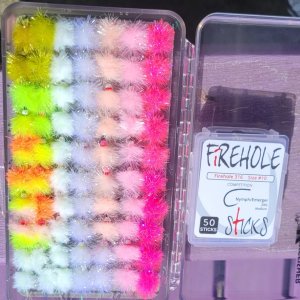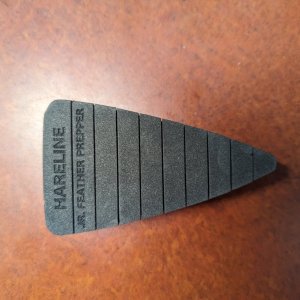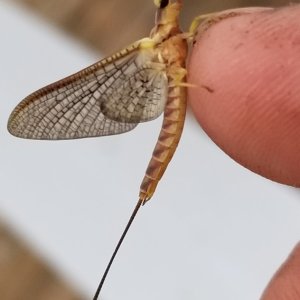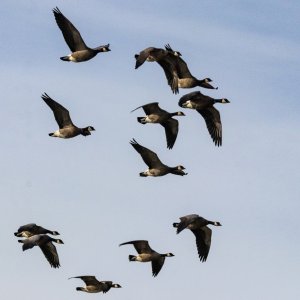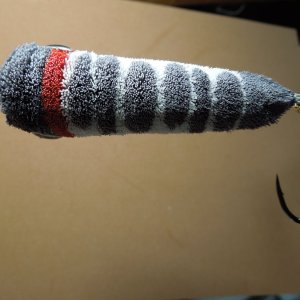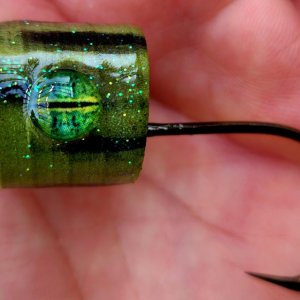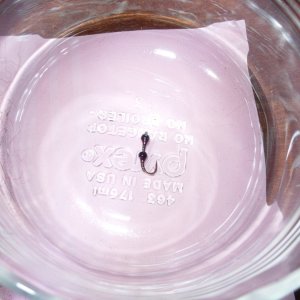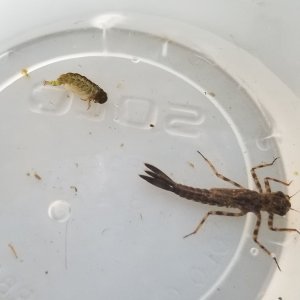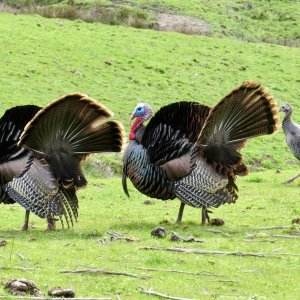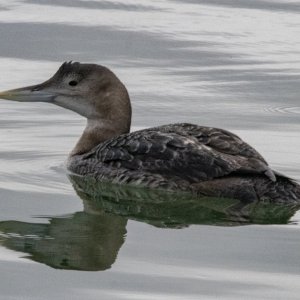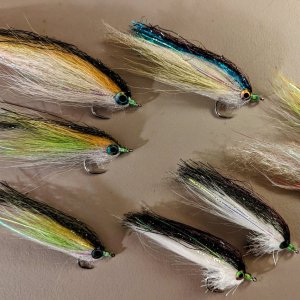Need some tips on casting long leader rigs from a sitting position. My lucky spot at my local lake drops right off the shore to 25ft deep right off the weed line. I went last week for my first attempt at indicator fishing. Tried to keep it in the 20ft zone while using a 25ft leader. Of course, after a short retrieve, I couldn't get the flies out of the water even trying roll cast. If I was standing up in a boat maybe but from the sitting position, no way. It felt like the first time a person goes from a floater to a fast sink line. What the hell's going on down there? Needless to say, it was a frustrating intro. to a lake indicator...
You are using an out of date browser. It may not display this or other websites correctly.
You should upgrade or use an alternative browser.
You should upgrade or use an alternative browser.
Casting Long Leader Indicator Rigs
- Thread starter Wetswinger
- Start date
From a sitting position, it's not really super easy nor usually pretty. You have to get the flies on or close to the surface. Then I start making D-loops sorta spazzy spey style until the flies are airborne, at which point you can hopefully work out enough line to cast them. If it just won't work, flop 'em out and kick away until you are a comfortable distance. But if you're fishing 20 feet down, you don't usually have to be far away horizontally. You can get lots of takes pretty much right under you 20 feet down.
Standing up and/or using longer rods can help a lot.
Standing up and/or using longer rods can help a lot.
troutpocket
Stillwater strategist
Try hanging a fast sinking line straight down with a short leader. Keep your rod tip just above the surface. Set when it dips.
Alternatively, rig up your long leader/floating line and drop your flies right off the end of the rod. Move away a few feet. No casting required!
Alternatively, rig up your long leader/floating line and drop your flies right off the end of the rod. Move away a few feet. No casting required!
This sounds about right, have you been watching and laughing.From a sitting position, it's not really super easy nor usually pretty. You have to get the flies on or close to the surface. Then I start making D-loops sorta spazzy spey style until the flies are airborne, at which point you can hopefully work out enough line to cast them. If it just won't work, flop 'em out and kick away until you are a comfortable distance. But if you're fishing 20 feet down, you don't usually have to be far away horizontally. You can get lots of takes pretty much right under you 20 feet down.
Standing up and/or using longer rods can help a lot.
I start with a switch rod, that helps a bunch. Next I use a 12’ to 15’ tapered leader and then add tapered tippet from there. With the actual casting, I sweep my rod in big swings back and forth above the surface of the water until the flies are almost to the top before starting any kind of back stroke. Don’t attempt to double haul, you’ll just mess everything up, keep your loops big and keep your casting stoke open and slow. One you are ready for your final cast push the line forward and right about the time the flies are going to turn over, do a quick little pull of the line. This will give just enough extra line speed to turn the indicator and flies over.
Good luck.
Good luck.
-----^ He does it well, I've learned to use the same sweeping technique to get the flies (most often two flies unless I'm in Canada, eh) close to the surface. Irafly's little tug at the end as the flies are starting to turnover is golden. One more thing I've found that compounds problems is having the quick release indicator more than five or so feet from the fly line, in other words, don't be fishing 14-feet of water with a 25-foot leader. Having nine or ten feet of leader between the indicator and end of fly line is asking (for me) for trouble.With the actual casting, I sweep my rod in big swings back and forth above the surface of the water until the flies are almost to the top before starting any kind of back stroke. Don’t attempt to double haul, you’ll just mess everything up, keep your loops big and keep your casting stoke open and slow. One you are ready for your final cast push the line forward and right about the time the flies are going to turn over, do a quick little pull of the line. This will give just enough extra line speed to turn the indicator and flies over.
Good luck.
Good luck!
In really deep water I'll set the indicator right under the rod tip. Like Buzzy, I like to keep the indicator within 3' of the flyline. Usually I'll start my leader with 5' of #20. Rods 10' or longer are also helpful. Thinking of your back cast as an "upcast" will help also...keeps the stuff from hitting the water behind you.
Always trust the guy with a tattoo of a bobber and the habit of popping up Waldo-style in books on stillwater fly fishing.I start with a switch rod, that helps a bunch. Next I use a 12’ to 15’ tapered leader and then add tapered tippet from there. With the actual casting, I sweep my rod in big swings back and forth above the surface of the water until the flies are almost to the top before starting any kind of back stroke. Don’t attempt to double haul, you’ll just mess everything up, keep your loops big and keep your casting stoke open and slow. One you are ready for your final cast push the line forward and right about the time the flies are going to turn over, do a quick little pull of the line. This will give just enough extra line speed to turn the indicator and flies over.
Good luck.
SEcond some of what the others are saying - longer rods ( 9.5 to 10.5 feet) and I typically over line a weight forward line (say a 7 weight line on a 5 weight rod) or have several friends that have gone to "spey " type lines for a dedicated indicator rod. Of course starting a long roll cast type (start far enough away from the boat to assure the flies are brought near the surface prior to starting the forward cast) with a open loop on the back cast.
Crut
Crut
Thank you all for your great response..Here's another question..
Do you find wind drifting with your indicator out a viable technique. Im not crazy about anchoring. The indicator is very sensitive to line tension and as I bob or swing off the anchor point it's difficult to keep the line tension correct. I've been tempted to drift but realize that it would change the relationship of fly depth to the bottom.
Thanks again for your responses...
Do you find wind drifting with your indicator out a viable technique. Im not crazy about anchoring. The indicator is very sensitive to line tension and as I bob or swing off the anchor point it's difficult to keep the line tension correct. I've been tempted to drift but realize that it would change the relationship of fly depth to the bottom.
Thanks again for your responses...
Does it well and describes it much better than I did! ("spazzy spey style")-----^ He does it well, I've learned to use the same sweeping technique to get the flies (most often two flies unless I'm in Canada, eh) close to the surface.
I'm curious what you're fishing out of.Thank you all for your great response..Here's another question..
Do you find wind drifting with your indicator out a viable technique. Im not crazy about anchoring. The indicator is very sensitive to line tension and as I bob or swing off the anchor point it's difficult to keep the line tension correct. I've been tempted to drift but realize that it would change the relationship of fly depth to the bottom.
Thanks again for your responses...
What you're describing can work, in fact I think I saw a boat full of people in this thread doing it effectively at Lone once, but if it's windy enough to be pushed around like you're describing, for me, it's usually not the best technique with floating line and indi. For wind drifting I find I usually do better with a full sink line.
troutpocket
Stillwater strategist
Regarding wind drifting with an indicator rig … it can be a good option. But if the fish are keyed into feeding within 1-2’ of the bottom, it can take you out of the game in a hurry.Thank you all for your great response..Here's another question..
Do you find wind drifting with your indicator out a viable technique. Im not crazy about anchoring. The indicator is very sensitive to line tension and as I bob or swing off the anchor point it's difficult to keep the line tension correct. I've been tempted to drift but realize that it would change the relationship of fly depth to the bottom.
Thanks again for your responses...
I use an 8ft Outcast pontoon .I'm curious what you're fishing out of.
What you're describing can work, in fact I think I saw a boat full of people in this thread doing it effectively at Lone once, but if it's windy enough to be pushed around like you're describing, for me, it's usually not the best technique with floating line and indi. For wind drifting I find I usually do better with a full sink line.
I don't find a direct wind drift works. I'll put my back to it, and kick to enough to keep alignment and slow speed. I'll cast out to the side, even perpendicular if I can, and throw a big mend. I'll fish it on a wind drift swing, just like in the river, with mends. You'll be amazed at the number of hits that come right after you mend.Do you find wind drifting with your indicator out a viable technique. Im not crazy about anchoring. The indicator is very sensitive to line tension and as I bob or swing off the anchor point it's difficult to keep the line tension correct. I've been tempted to drift but realize that it would change the relationship of fly depth to the bottom.
Thanks again for your responses...
Of course with fins, one can really control wind drift speed so if the bottom isn't changing depth over the course of the drift it can be effective and the fly should stay in the zone. BUT: I think it also depends on pattern, probably not so much with chironomids unless the drift is really slow, but that's really just my theory and opinion. Something like a jig or nymph, I move my indicator rig a lot, whether anchored or drifting. Several years ago I was fishing with Kelly Laatsch with a nymph under an indicator, Kelly had me twitching the rod tip to twitch the bobber ..... it was at times very effective compared to dead drifting.Regarding wind drifting with an indicator rig … it can be a good option. But if the fish are keyed into feeding within 1-2’ of the bottom, it can take you out of the game in a hurry.
Pontoons can be tough to indicator fish out of in windy conditions. They are highly affected by wind, but difficult to anchor with fore and aft anchors, which is what you need to avoid the side-to-side swing when it's windy or shifty breeze. You can use your flippers in a pontoon, but not enough to really stay stationary when it's truly windy. Float tubes are a little less affected by wind, especially old roundies, so it's a little easier to indi fish without anchoring compared to a pontoon boat. And other craft like prams, jon boats, canoes and the like, you can use two anchors without too much trouble. Pontoon boats with flippers are amazing at trolling--a highly controlled troll that can be combined with line manipulation which can be very effective.I use an 8ft Outcast pontoon .
Thank you all for your great response..Here's another question..
Do you find wind drifting with your indicator out a viable technique. Im not crazy about anchoring. The indicator is very sensitive to line tension and as I bob or swing off the anchor point it's difficult to keep the line tension correct. I've been tempted to drift but realize that it would change the relationship of fly depth to the bottom.
Thanks again for your responses...
I've had some really good days wind drifting with and indicator. Much more so with patterns like balance leeches then chironomids though.
The wind drift while on anchor can be good at times as well. The wind will change and blow your indicator back towards you or off to the side of your craft.
You can bring line in to try and keep as straight a connect as possible or just leave the big bow in your line. The latter makes setting the hook harder but that bow in your line makes for a nice, steady and slow presentation of your pattern.
SF

